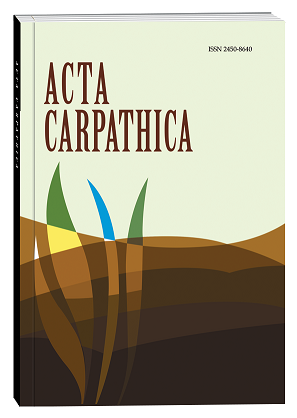OPTIMIZATION OF ION TRACK CHARACTERISTICS IN A TRACK BIOSENSOR
DOI:
https://doi.org/10.32782/2450-8640.2022.2.4Keywords:
defect structure of track, sensitivity of track biosensor, computer modellingAbstract
When constructing a computer model of an ion track in a biosensor, it is important to take into account the main structural features of a real track. As now established, the transition from track to sample volume is not abrupt. In the present work, the three layer structure of the inner walls of the track (including Penumbra) is taken into account. It is shown that the passage of a charged liquid through the track depends significantly on the defect structure of this transition layer. Since the profile of the current density flowing through the liquid track depends on the defective structure of the transition layer in the track, it is important to determine the ion bombardment conditions that provide its optimization. Thus, at the first stage of creating a track structure, it is necessary to solve certain problems of radiation physics of the interaction between fast ions and a thin film. In turn, these characteristics of track structure will determine the sensitivity of the biosensor to the detection of contaminants in a particular environment. It is shown that it is important to take into account the specific influence of each of the three-layer boundary layer on the flow of the “carrier” fluid. Carrier liquid means a “pure” substance into which contaminants should be determined. Studies have shown that the optimization of the functioning of a track biosensor is a multi-parameter task, in which several parameters must be varied simultaneously. Therefore, computer simulation makes it possible to be an effective method for optimizing the parameters of a track biosensor. Further studies should be aimed at finding a correlation between the structural features of Penumbra and biosensor parameters. However, this requires a significant improvement in the algorithms and computer model.
References
Renkin E.M. Filtration, diffusion, and molecular sieving through porous cellulose membranes. J. Gen. Physiol. 1954. Vol. 38. P. 225–243.
Fundamentals of Ion-Irradiated Polymers / Ed. D. Fink. Springer. 2004. 406 p. URL: http://www.springer.com/978-3-540-04027-9.
Simulation of the passage of ion flows through nanotracks / Y. Bondaruk et al. International Journal of Advanced Computer Technology (IJACT). 2020. Vol. 9. P. 1–4.
Ion Track Etching Revisited: I. Correlations between track parameters in aged polymers / D. Fink et al. Nucl. Instrum. Meth. B. 2018. Vol. 420. P. 57–68.
Theory and Modelling of real-time physical and bio-nanosensor systems / Yu. Shunin et al. Computer Modelling & New Technologies. 2016. Vol. 20. P. 7–17.
Computer model of track biosensor / I. Donchev et al. Semicond. Phys. Quant. Electron. Optoelectron. 2022. Vol. 25. № 4. P. 148–152.
Nano-sensor devices for CBRN-agents detection: Theory and design / Yu. Shunin et al. NATO Science for Peace and Security Series A: Chemistry and Biology. 2018. P. 169–184.
Improving the design of ion track-based biosensor / D. Fink et al. NATO Science for Peace and Security Series A: Chemistry and Biology. 2018. P. 185–197.
Computer modeling of ion current pulsations in track-containing foils / N. Mykytenko et al. Journal Comp. Sci. 2015. Vol. 6. P. 34–39.








